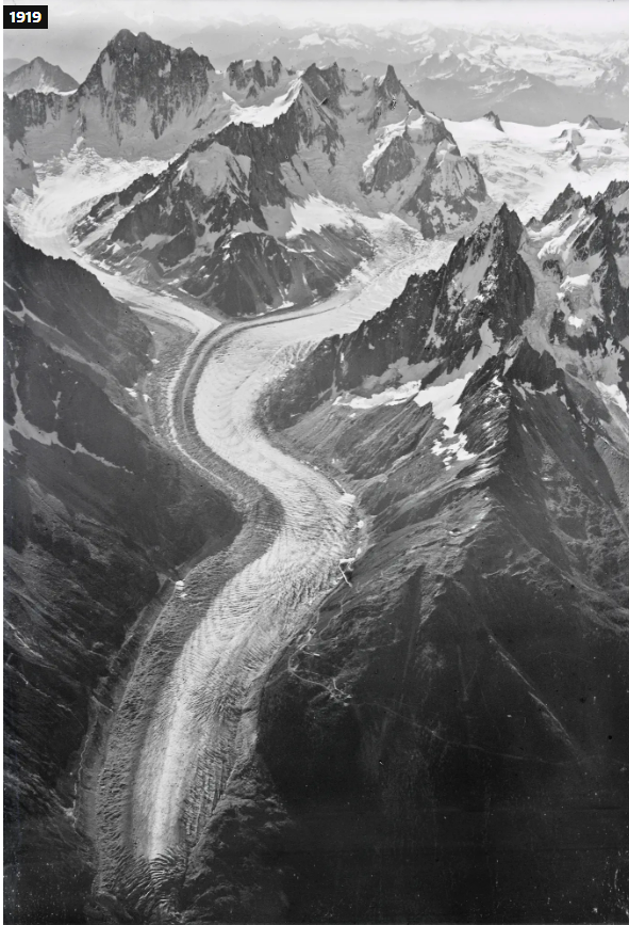Water and ice play an important role in today’s stage: in the past, on a hot day like today and in the future.
The riders take off today in a village that once was the scene of one of the deadliest disasters ever caused by a glacier. In the middle of the night of 11 July 1892 a flood devastated the village of Saint-Gervais-Le Fayet. It caused 175 fatalities. The flood was a mixture of water, boulders and mud. The source of the disaster was the Tête Rousse Glacier located about 15 km south-east of Saint-Gervais on the Northern side of the Mont Blanc.

Within the glacier there was a hidden pocket of meltwater. When the ice ruptured, 200,000 m3 of water and ice was released. It flowed down the valley and destroyed everything in its path until it hit the village. In recent times new pockets of water were discovered in 2011, 2013 and 2014. An automatic alarm system was installed. Over six million euros were spent to monitor and pump out water from the glacier cavity. This protects the 3000 people living in the town of St. Gervais. See also https://youtu.be/ALKzWQfBRhc.
Climate change and glaciers
Glaciers not only pose a threat they are an important source of water in particular during droughts. Today the riders ride through a hotspot of glacier change. Satellite imagery showed that for the period between 2000 and 2019 the glaciers in the Alps lost more than one meter in thickness every year. That is the equivalent of 1.7 Gigaton of ice. Every single year. That is enough drinking water to supply all the Tour de France riders with water for 40 million years of Tour de France. (we assume 200 riders drink 10 liters of water per day during 21 stages.)
Nowhere in the world are glacier retreating and losing mass so fast as in the Alps. The visual evidence of these glacier changes are dramatic. It will not take long until the majority of glaciers in Europe has disappeared. The latest projections show that even if we manage to keep the global warming below 1.5 °C only about 20% of the glacier ice in the Alps will be left by the end of the century.


Adapting to climate change
The melt down of the glaciers has serious consequences both for tourism, natural hazards, hydropower and water supply. Not only should we try to stop burning fossil fuels and transitioning to more sustainable sources of energy. This will stop further catastrophic melt of the glaciers. But next to that we also need to adapt to those changes as many of them are already irreversible.

One option is to create artificial buffers of water. These can be used when there is a strong need for electricity or water. A good example of such a man-made buffer is the Roselend lake. It’s a regular in the Tour de France on the climb from Beaufort to Cormet de Roselend. The construction of this dam was finished in 1962. The dam is about 150 meter high and is used primarily for hydroelectric power generation. It can store about 187 million m3 of water. To put this in perspective that is about 10% of what the glacier in Alps loose every year.
In other words, we need to build ten Roselend reservoirs every year to store the glacier melt water that would otherwise be lost to the ocean. It is a scary truth. We need to act now if we want to keep enjoying watching the peloton in these beautiful glaciated landscape of water and ice in the years ahead.






